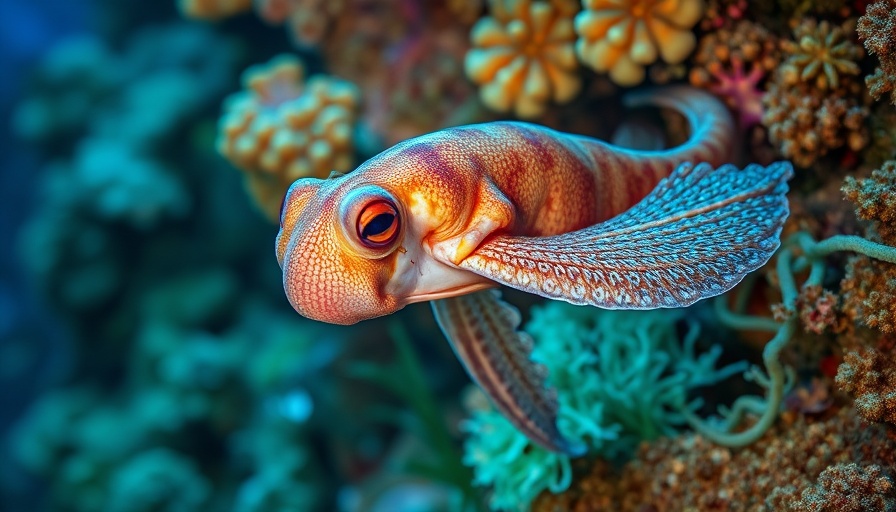
A Mesmerizing Display of Nature’s Camouflage
The remarkable broadclub cuttlefish have astounded researchers with their sophisticated ability to mesmerize prey using dynamic skin patterns. According to a recent study conducted by scientists at the University of Bristol, these clever creatures exhibit a unique form of motion camouflage that aids in their stealthy approach to hunting. This ability not only highlights the cuttlefish's intelligence but also opens up exciting avenues for understanding prey-predator dynamics in marine ecosystems.
Understanding Motion Camouflage in Cuttlefish
Cuttlefish are known for their fast color-changing skin, giving them flexibility in camouflage. These changes ensure that cuttlefish can blend into their surroundings, evading detection while approaching prey. The study elaborated that instead of merely relying on traditional camouflage, where stillness is key, the broadclub cuttlefish have evolved to use rhythmic dark stripes that move across their body. This developed strategy effectively disrupts the visual perception of their prey, potentially leading to confusion and distraction during the critical moments of a hunt.
The Science Behind the Illusion
The researchers took a close look from the prey's perspective, providing significant insights into how these cuttlefish create the illusion of invisibility. The animal's dynamic display not only camouflages but also manipulates what prey can see. This finding is crucial as it suggests that the prey’s ability to perceive motion may be impaired by the strong visual cues produced by the cuttlefish's passing stripes, allowing the predator to close in unnoticed.
Potential Further Research and Implications
Dr. Matteo Santon, lead author of the study, expressed excitement about future research prospects. Plans are already in place to investigate the other types of hunting displays that cuttlefish may employ. Each display could serve different hunting strategies, potentially revealing how cuttlefish choose their approach based on environmental factors or prey types. Understanding these variations could revolutionize our knowledge of marine predator adaptations.
Comparative Analysis: Cuttlefish and Other Camouflaged Creatures
This discovery compels a broader conversation about the evolutionary mechanisms among various predators that rely on camouflage. Like the broadclub cuttlefish, other creatures, including octopuses and chameleons, have perfected their abilities to blend and adapt to their environments in fascinating ways. Insights gained from these comparative studies can better inform conservation efforts by highlighting how vital intricate predatory behaviors are to maintaining ecological balance.
Broader Context: Lessons from Nature for Urban Living
The ability of cuttlefish to adapt and deceive can draw analogies to human adaptability, especially within urban settings like Dallas. Understanding how nature inspires novel solutions—like motion camouflage—may enhance urban planning and lifestyle improvement strategies. The Dallas lifestyle is burgeoning with new ideas that aim to balance urban living with nature conservation, reflecting a similar need for adaptability that these marine creatures exhibit.
Conclusion: The Magic of Nature’s Innovations
Cuttlefish are not just fascinating marine animals; they provide rich material for studying evolution and adaptation. Their intricate methods of hunting, thriving in a highly competitive environment, underscore the importance of observation and innovation. As we dive deeper into understanding these magnificent creatures, we uncover invaluable wisdom that can help shape future technologies and urban development strategies.
This story encapsulates a journey into the surprising connections between nature and urban life. As we ponder the efficiencies of these mesmerizing cuttlefish, let us also admire the endless innovations nature offers us.
Want to know more about how environmental adaptations can inspire urban growth? Discover the different lifestyle elements that thrive in the Dallas area, where innovation meets nature.
 Add Element
Add Element  Add Row
Add Row 



 Add Row
Add Row  Add
Add 


Write A Comment